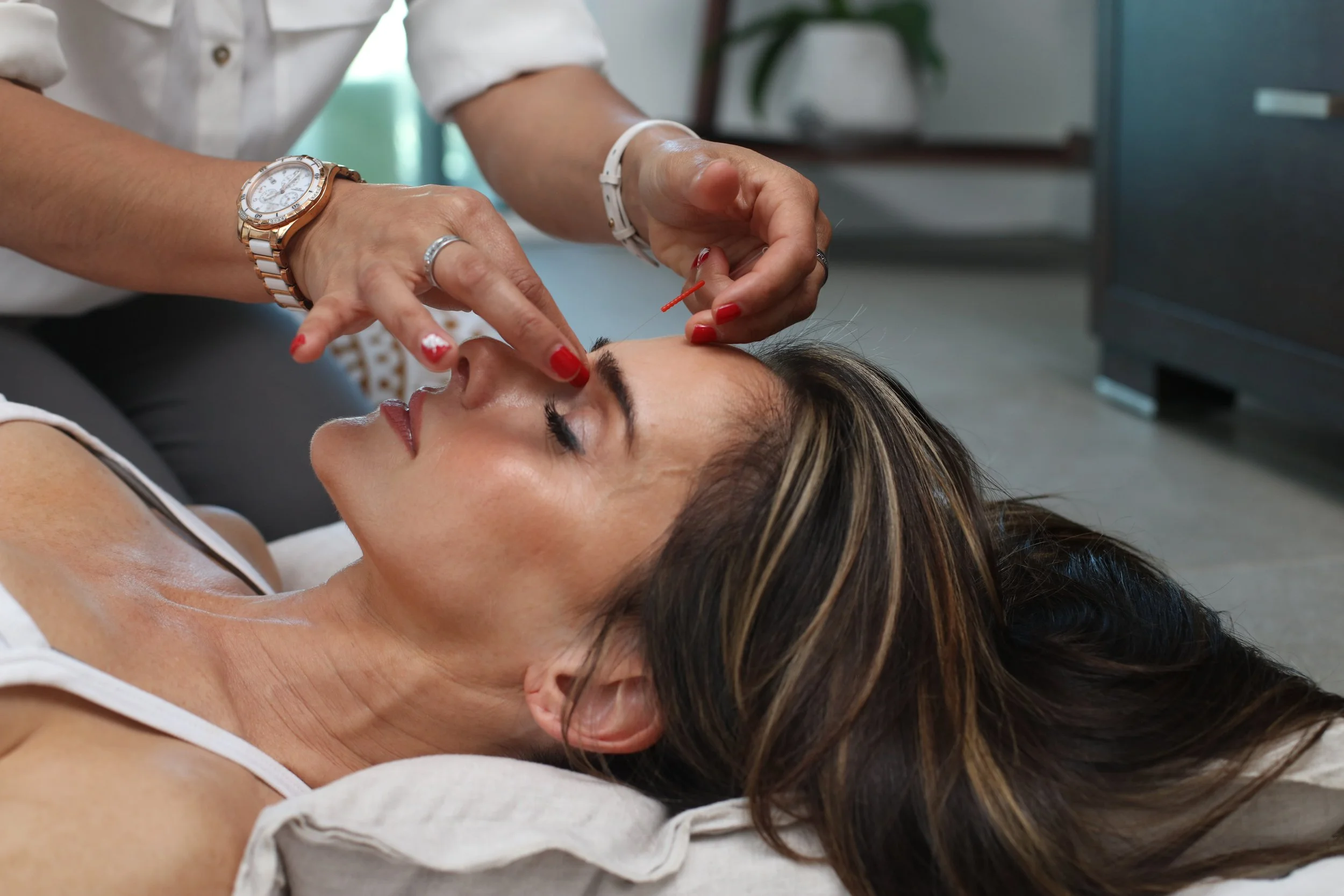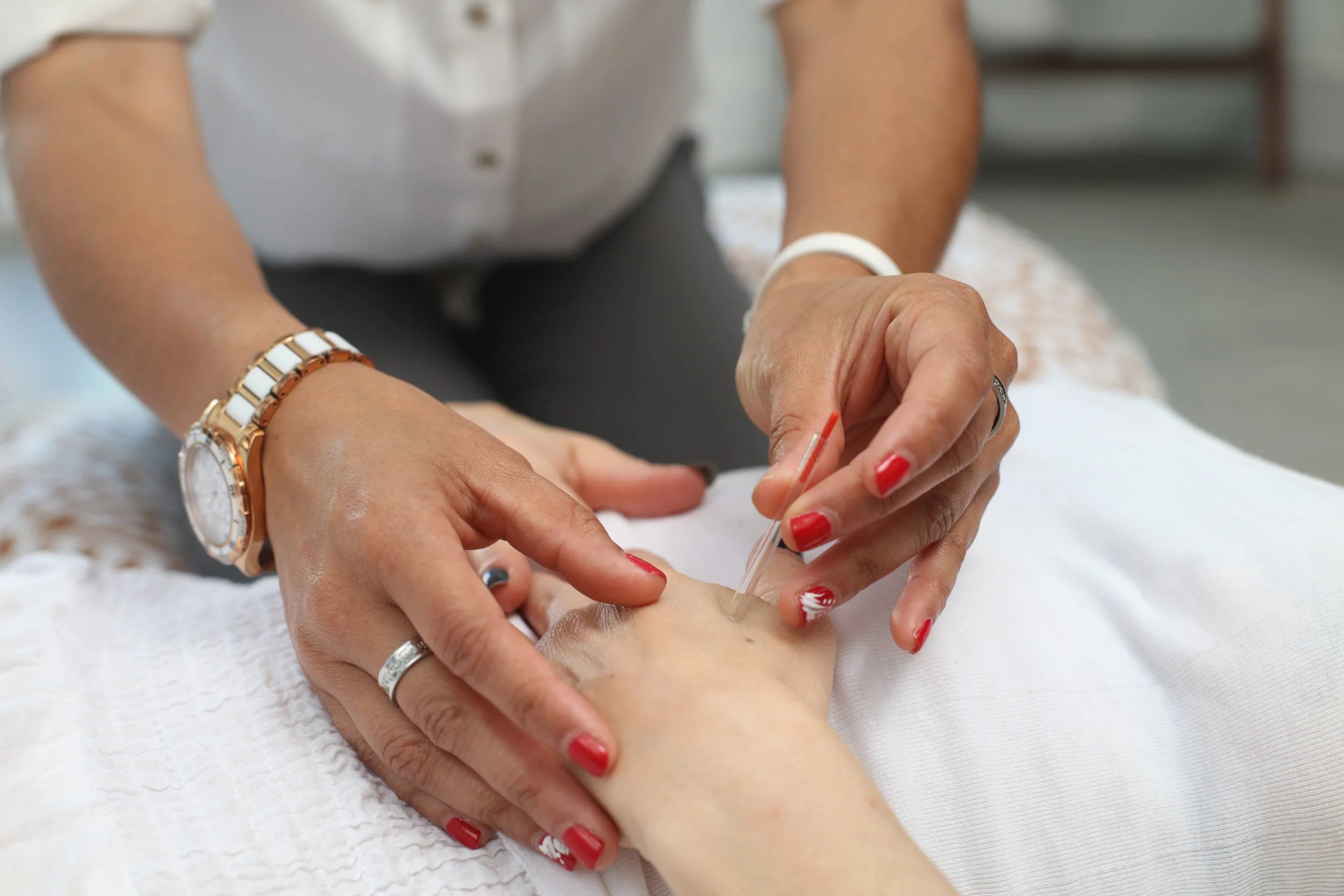FAQs
-
Acupuncture is one treatment modality of Chinese medicine. Once an acupuncturist completes an initial intake and formulates a differential diagnosis acupuncture points (acupoints) are then selected for treatment. Acupoint selection is done on an individual basis and can change from one treatment to the next. Needling acupoints stimulates the body’s self-healing processes that lead to biochemical responses including neurotransmitter release; hormone, digestion and blood pressure regulation; improved blood circulation; and decreased inflammation.
-
Most people barely feel a thing when needles are inserted. Some people feel a slight pinch, and others ask “Is it in yet?” The reason acupuncture needles don’t give the painful sensation you might expect is because they’re very, very thin in comparison to hypodermic needles used to give injections. Hypodermic needles are necessarily hollow to allow for fluid transfer. They also have a blunt point (actually a wedge shape) in comparison to an acupuncture needle. 40 acupuncture needles fit into the tip of one standard 18 gauge hypodermic needle.
There are certain sensations associated with the therapeutic effects of acupuncture, which are known as de qi (pronounced “day chee”). These may include slight cramping, heaviness, distention, tingling, or aching sensations that may be felt locally at the area being treated and can travel along the treated meridian. Meridians are pathways along the body that acupoints are located on.
If any discomfort is experienced, it is usually mild.
-
Acupuncture is very safe when practiced by a thoroughly educated licensed professional. Systematic reviews examining the effectiveness of acupuncture consistently find it to be a safe therapy. The average liability coverage for an acupuncturist is around $600 per year, while primary care physicians pay an average of $12,000 per year. That’s a 20:1 difference. A visit to an acupuncturist is at least as safe as a visit to your doctor, if not safer.
Acupuncture needles are extremely safe, because they are pre-sterilized, individually packaged, and disposable. Every practitioner gets extensive training in anatomy so as to avoid accidentally inserting a needle in a place that can cause damage.
Know that qualifications and educational background of your acupuncturist. Make sure they hold a graduate degree in acupuncture from an accredited college and that they are licensed in the state where you will be receiving treatment. Many states, including NH, require that practitioners compete national board certification with the National Certification Commission for Acupuncture and Oriental Medicine (www.nccaom.org).
-
Acupuncture and herbs work whether you believe in them or not. Good results are seen in the majority of cases. When all other treatment methods have failed, this indicates a systemic imbalance - exactly what acupuncture and herbs excel at treating.
-
Typically acupuncture treatments are given once a week. If the condition is acute and painful, treatments may be given 2-3 times per week until the condition starts to come under control. The exact duration of treatment depends on the condition, your basic level of health, and how well you respond to acupuncture.
Generally, acute conditions may only need a couple of treatments where-as more chronic conditions may be resolved with a course of 6-12 treatments. Conditions that are particularly severe or degenerative may need several treatments before improvement and may require many treatments over time. Initially, treatments are scheduled as often as three times a week or as little as twice a month.
-
It is advised not to receive acupuncture on an empty stomach, immediately after consuming a large meal, intoxicated, very fatigued, or emotionally upset. Wear loose, comfortable clothing. During treatment it is best to relax and to ask your practitioner any questions you may have. It is recommended to avoid physical activity up to 6 hours after receiving a treatment.
-
In Chinese medical theory, acupuncture works by balancing the body’s Qi. Qi can be described as a form of bioenergy that runs along 12 major meridians. If Qi gets blocked, ir shows up as an imbalance or illness. Basically, if you have a health condition, some part of your body’s system is out of whack. Chinese medical theory allows us to diagnose the imbalance….and balance it.
In Western medical theory, acupuncture appears to work by stimulating parts of the brain. It also stimulates the body to release natural biomolecules such as neurotransmitters, vasodilators, and hormones. The exact mechanisms which brings this about are unknown, but the effects are measurable.
A good example of this is the use of acupuncture to induce labor. One of the first things that students of Chinese medicine learn is that there are a few points that are contraindicated to use with pregnant women. These points cause the release of oxytocin, which is the hormone that naturally induces labor. Studies have shown that using acupuncture to induce labor decreases pain, the use of pharmaceuticals, the use of forceps and vacuum assisted births, and reduces the active (painful) phase of labor by an average of 3.6 hours (Schlaeger et al., 2016).
-
Some insurance cover acupuncture. You can usually find out by calling the number on your insurance card. We can give you a statement that provides all the information you need to submit to your insurance company for reimbursement.

